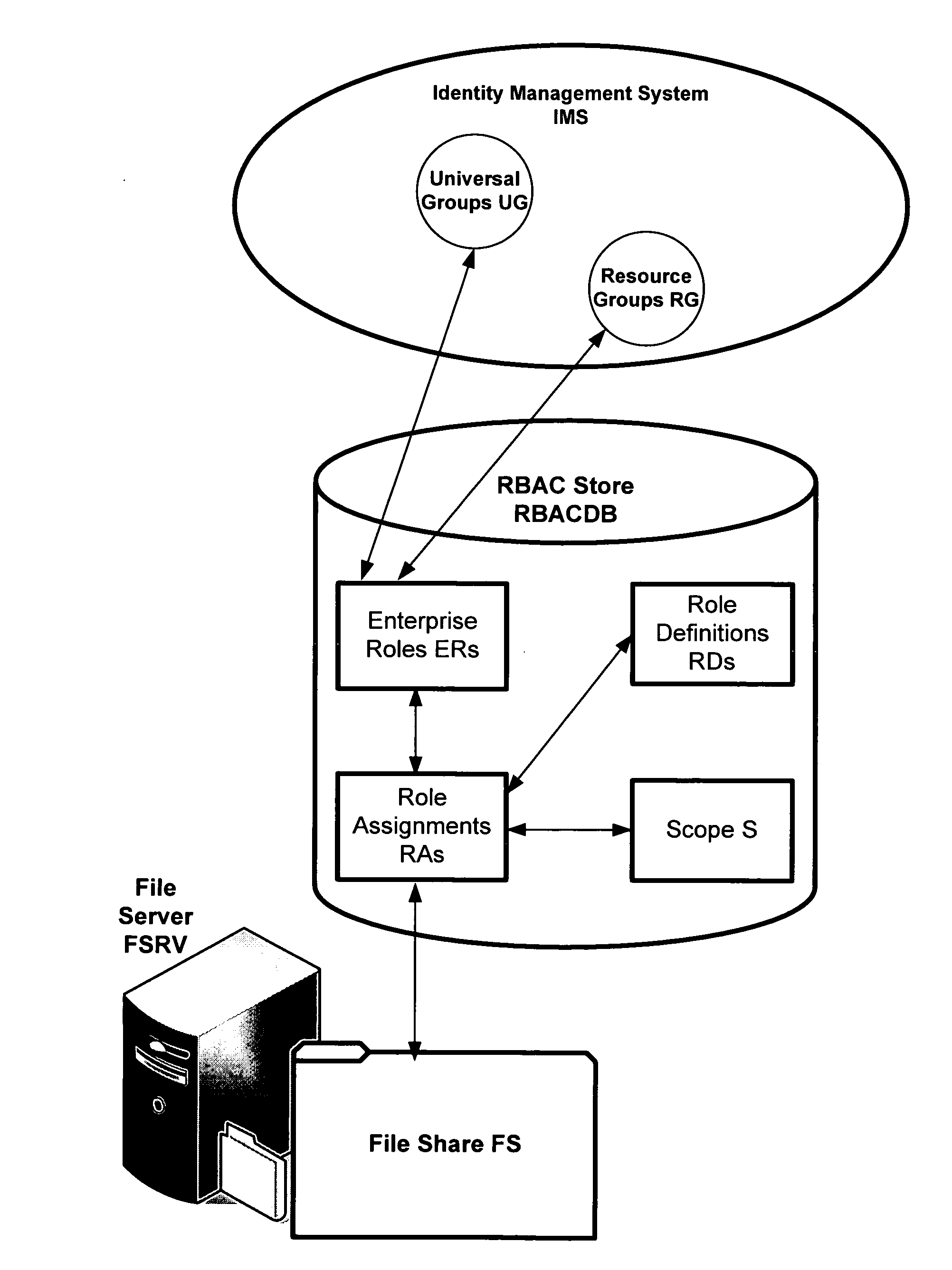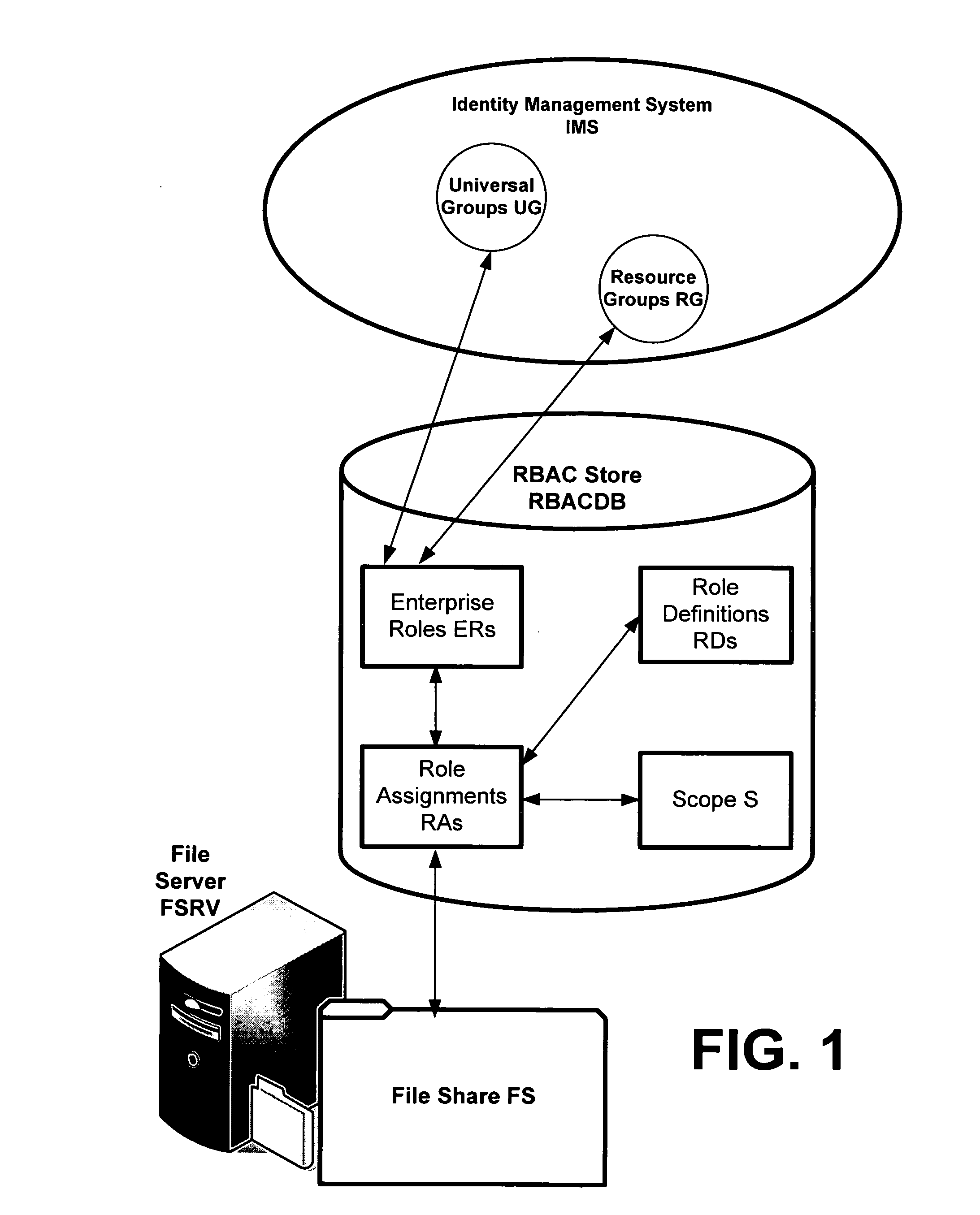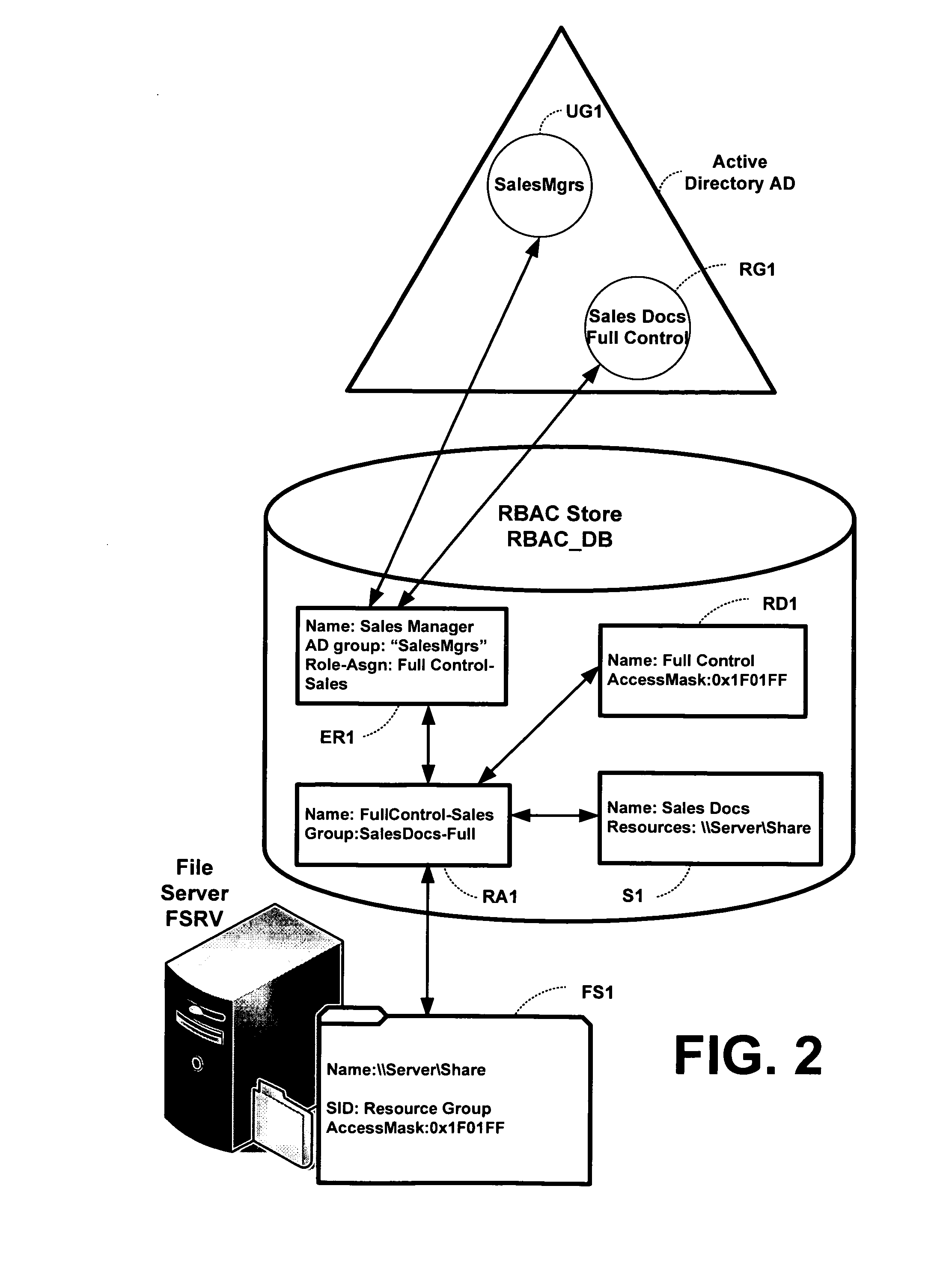Translating role-based access control policy to resource authorization policy
a role-based access control and resource authorization technology, applied in the field of role-based access control (rbac) policy translation to resource authorization policy, can solve the problems of security administration complexity, manageability and complexity problems, and the inability to translate the role-based authoring model for managing rbac “roles
- Summary
- Abstract
- Description
- Claims
- Application Information
AI Technical Summary
Problems solved by technology
Method used
Image
Examples
Embodiment Construction
Overview
[0018]RBAC is an emergent solution for centralized authorization across an organization. RBAC enables activities that are difficult in the distributed ACL models on most computer systems. Such activities include authorization queries across applications. In consideration of the difficulties of accommodating complex ACL implementations relative to the advantages of RBAC policy systems, the invention provides a role-based authoring model for managing RBAC “roles” that can then be translated to ACL-based applications and other authorization enforcement mechanisms. To achieve this, the invention defines a new, generic RBAC system, e.g., based on existing RBAC conceptual models.
[0019]Thus, in one aspect of the invention, the invention provides a RBAC model that is compatible with resource authorization policy structures, such as ACLs, so that a translation can be performed between role-based data structures to ACLs. This includes the ability to map the RBAC policy to ACL-based pe...
PUM
 Login to View More
Login to View More Abstract
Description
Claims
Application Information
 Login to View More
Login to View More - R&D
- Intellectual Property
- Life Sciences
- Materials
- Tech Scout
- Unparalleled Data Quality
- Higher Quality Content
- 60% Fewer Hallucinations
Browse by: Latest US Patents, China's latest patents, Technical Efficacy Thesaurus, Application Domain, Technology Topic, Popular Technical Reports.
© 2025 PatSnap. All rights reserved.Legal|Privacy policy|Modern Slavery Act Transparency Statement|Sitemap|About US| Contact US: help@patsnap.com



